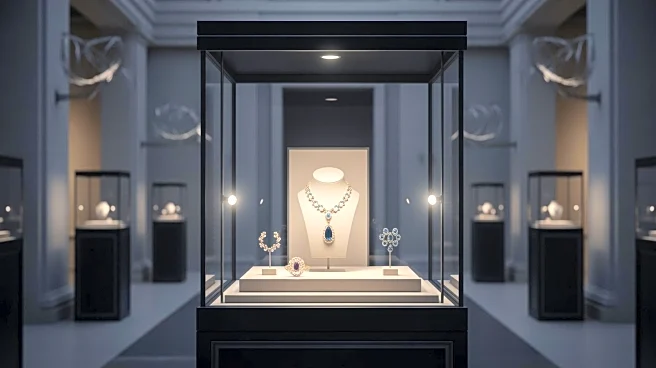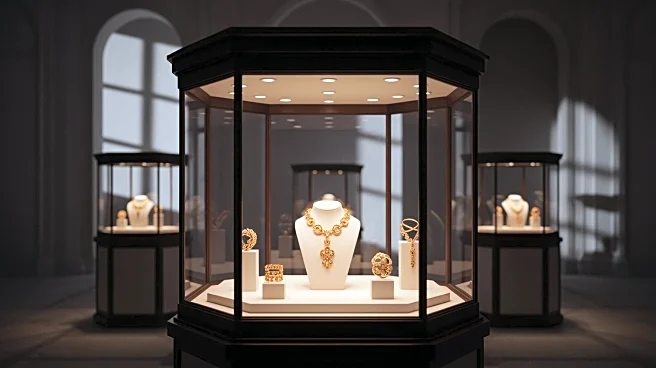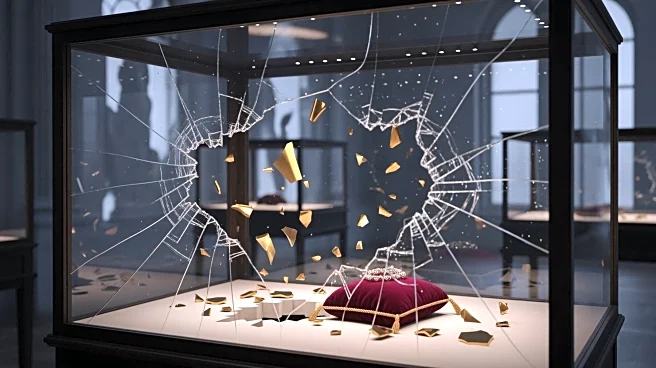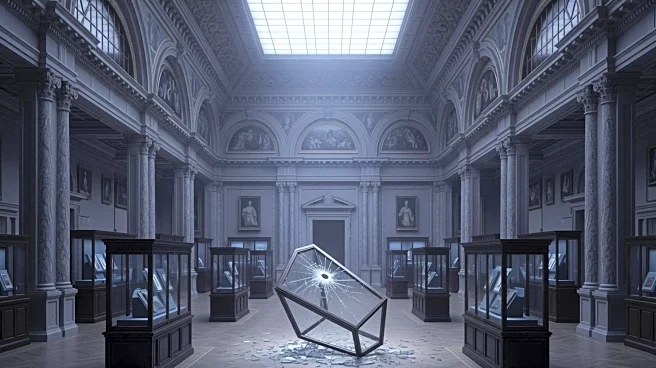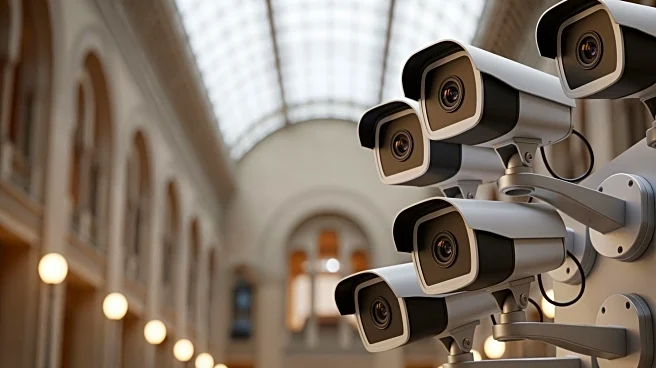What's Happening?
In a bold daytime robbery, thieves have stolen crown jewels from the Louvre Museum in Paris. The heist involved the use of a basket lift to access the museum, where the perpetrators forced open a window and smashed display cases to seize jewelry of 'inestimable
value.' The incident has raised concerns about security measures at one of the world's most famous cultural landmarks. French authorities are investigating the theft, which has captured international attention due to the audacity and scale of the crime.
Why It's Important?
The theft of crown jewels from the Louvre represents a significant breach of security at a major cultural institution, highlighting vulnerabilities in protecting valuable artifacts. This incident could lead to increased scrutiny and potential reforms in museum security protocols globally. The stolen items, described as having 'inestimable value,' are not only financially significant but also hold cultural and historical importance. The heist may impact public trust in museum security and could influence future policies regarding the protection of cultural heritage.
What's Next?
French authorities are conducting a thorough investigation to recover the stolen jewels and apprehend the culprits. The Louvre may implement enhanced security measures to prevent future incidents, potentially setting a precedent for other museums worldwide. The international art community is likely to follow developments closely, as the recovery of the jewels and the resolution of the case could have implications for art theft prevention strategies. Public and private institutions may collaborate to improve security technologies and practices.
Beyond the Headlines
The theft raises ethical questions about the protection and ownership of cultural artifacts. It underscores the ongoing challenges faced by museums in balancing public access with security. The incident may prompt discussions on the role of technology in safeguarding heritage and the responsibilities of cultural institutions in preserving history. Additionally, it highlights the allure and risks associated with high-value art and jewelry, often targeted by sophisticated criminal networks.


